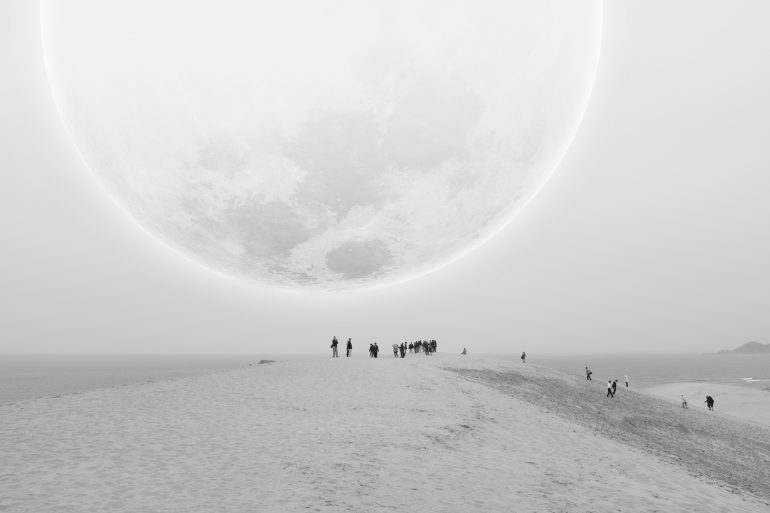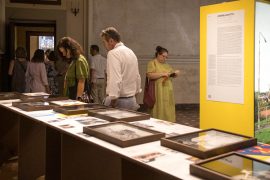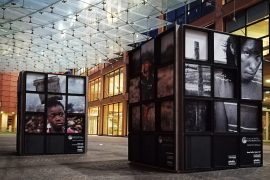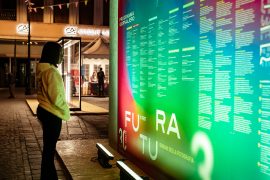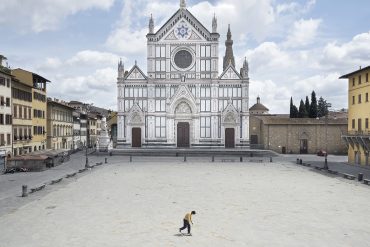by Dario Orlandi
_
To the moon, please don’t send a general,
he would make a barracks with trumpets and corporals.
Don’t send a banker on the silver satellite,
or he will put it in the safe to show it for a fee.
Do not send a minister with his retinue of ushers:
it would fill the moon craters with paperwork.
He has to be a poet going to the moon:
with his head on the moon he has been for a long time…
He has long been accustomed to dream the best dreams:
he knows how to hope for the impossible even when he is hopeless.
Now that dreams and hopes become true as flowers,
on the moon and on the earth make way for the dreamers!
(Gianni Rodari)
Forced to a sudden lockdown by the pandemic of winter 2020, Fotografia Europea of Reggio Emilia has reopened its doors with a 2021 edition that retained the title of the previous year, inspired by the memory of Gianni Rodari, expanding its reading to current events, dramatic and visionary by necessity.
“On the Moon and on the Earth, make way for the dreamers!”, taken from On the Moon (Sulla luna) by the Piedmontese poet and writer, is an unusual title for a photography festival; but the dimension of the dream, for its disorganized and casual nature, requires a dynamic and open title, just as the pandemic condition was unexpected and the necessary answers to face such an unexpected event were visionary: the playful and imaginative dream inspired by Rodari overlapped with randomness and unpredictability and combined with fantasy, as an antidote and resource against the difficulties of reality.
The exhibitions – organized as usual in the cloisters of San Domenico and San Pietro, in the Palazzo Da Mosto, Palazzo Magnani and Palazzo dei Musei, as well as in numerous outdoor venues in the beautiful center of Reggio Emilia – alternate styles and languages (history and fiction, document and art) through the eyes of upcoming and consolidated artists, offering a complete and complex overview, the result of the excellent work of the artistic and technical direction.
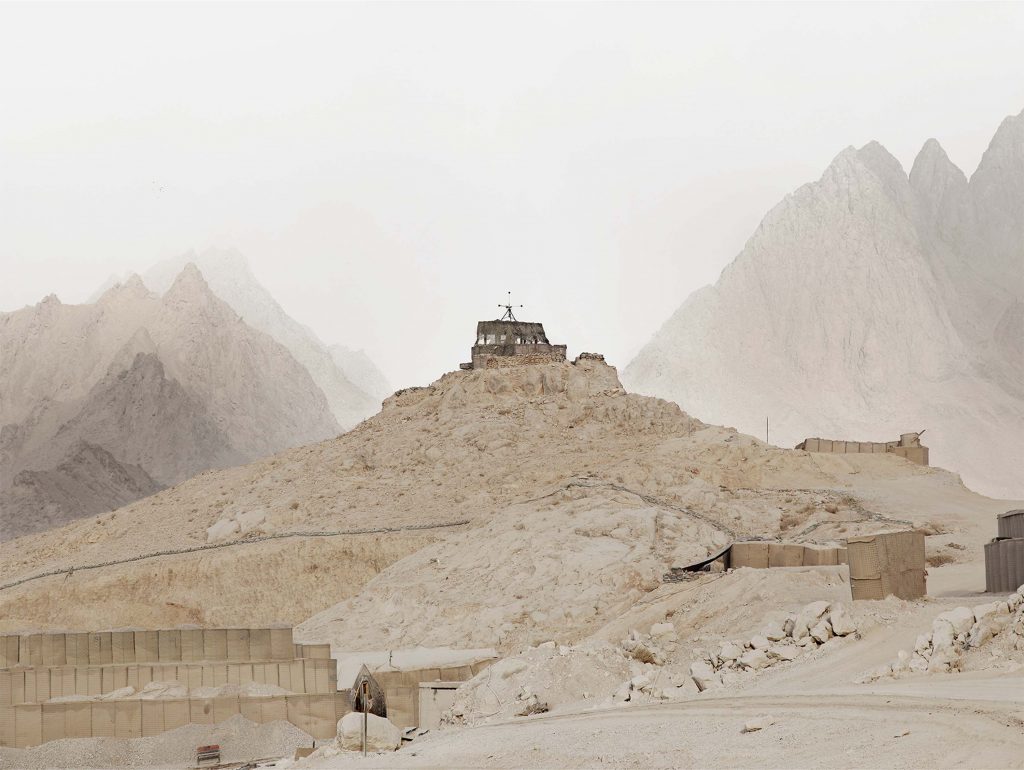
In the Cloisters of San Domenico, the audio-photographic work L’isola (The Island) by Anush Hamzehian and Vittorio Mortarotti on the meaning of cultural memory and its conservation, is followed by the images of David Jimenez in which the forms chase each other along pairing frames, giving life to unpredictable continuities and juxtapositions of meanings between the images. The harsh reality of the ethnic question in the southern United States emerges in Index G – by Piergiorgio Casotti and Emanuele Brutti – which documents, with obsessive lucidity, the economic and social separation of Saint-Louis, marked by the dividing line between the city’s black and white neighbourhoods; from reality to staging, Lebohang Kganye‘s collage photographs reconstruct the practices and cultural codes of apartheid in South Africa.
The driving force of a bursting adolescence and the ineffability of an uncertain future are the core of Raymond Meeks‘ Halfstory Halflife, while the eerie austerity of military observation towers, and the idea of control that follows, underlie the work by Donovan Wylie. Noémie Goudal builds impossible constructions that she photographs with a symbolic and dematerialized language, while Yasmina Benabderrahmane investigates the symbols of a Morocco caught between tradition and desire for modernity. The large rooms on the first floor are dedicated to Sophie Whettnall who, with the aid of numerous languages, including photography, offers a reflection on the different intrinsic temporalities of places, works of art and their use.
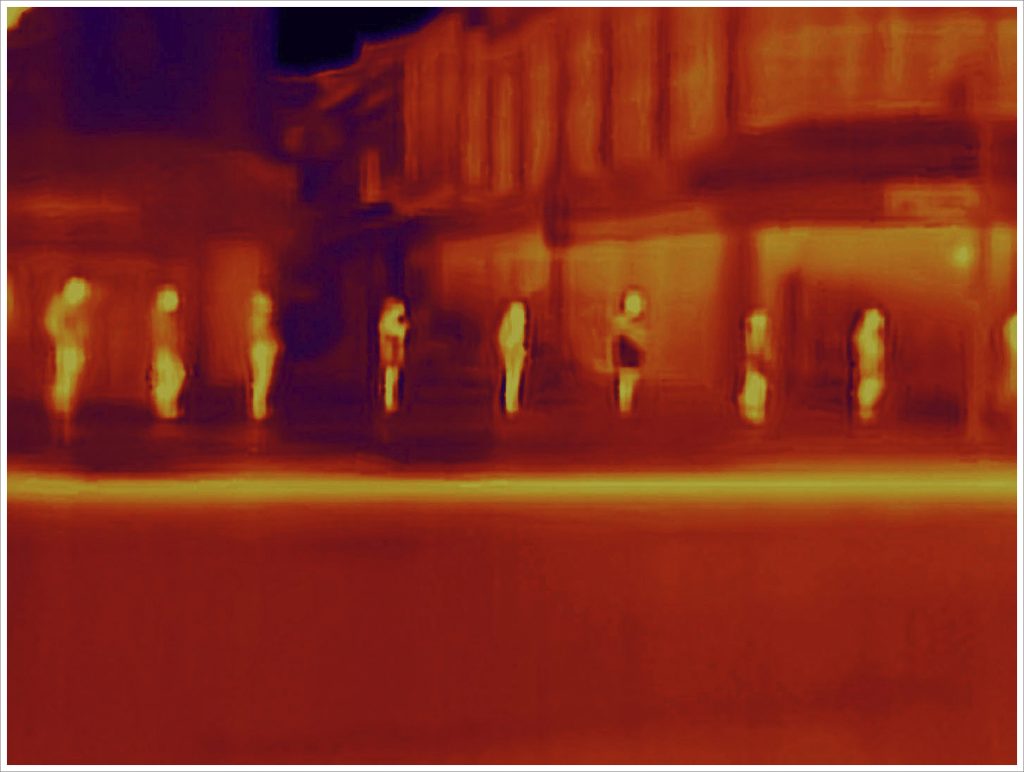
Scattered around the city we find the landscapes of a metaphysical India in the images of Soham Gupta, the perturbing thermo-scanner explorations carried out by Antoine D’Agata during the pandemic, the dramatic theatricalizations of reality by Alex Majoli, the sci-fi photography by Marco Di Noia that stages giant moons in the skies of possible worlds, the ruthless and voyeuristic stolen tales of Jeff Mermelstein.
Palazzo Da Mosto hosts an intense dialogue on reality, fiction and representation between Thomas Demand and Martin Boyce, followed by the selection of photographic books Home is where one starts from, curated by Francesco Colombelli, which explores the identity of the idea of domestic and the concept of home.
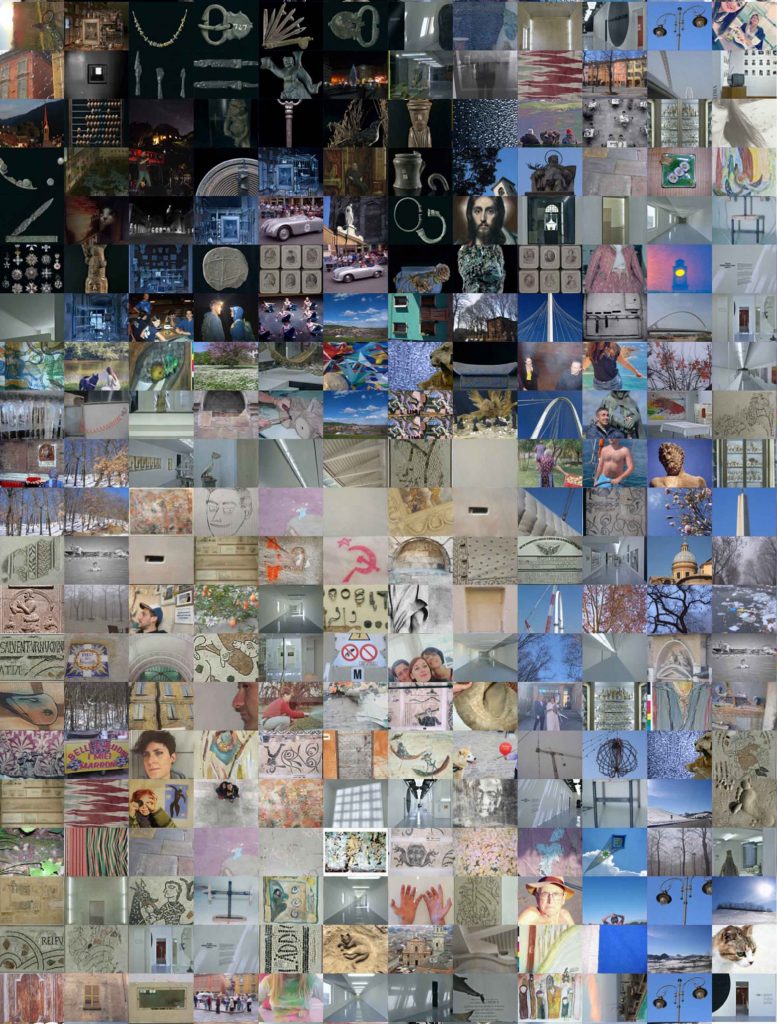
At Palazzo dei Musei, Joan Fontcuberta once again walks the perimeter of reality thanks to subtle trompe l’oeil composed of images within images, a metaphor for the foundational capacity of the virtual over the real. The same building hosts Incontri! Art and people, the wunderkammer coordinated by Luca Manfredi where six people with fragilities have dedicated themselves to the collective design of an imaginative space as a refuge from reality.
At Palazzo Magnani, we find an exhibition within the exhibition: True Fictions, the extensive research work curated by Walter Guadagnini on the theme of fiction in photography from the seventies to present times. From the criticism to the gender stereotypes of Cindy Sherman’s staging, the exhibition offers a complete retrospective on staged photography passing through the social criticism of Nicosia, the questions on the relationship between images and memory of Thomas Demand’s photographic performances, the reflection on James Casebere’s media, up to the provocations on body and sexuality by Andres Serrano and Julia Fullerton-Batten or to the dystopian scenarios with modernized biblical references by Emily Allchurch. (Many others are the authors on display, for a complete overview, see the dedicated catalog).
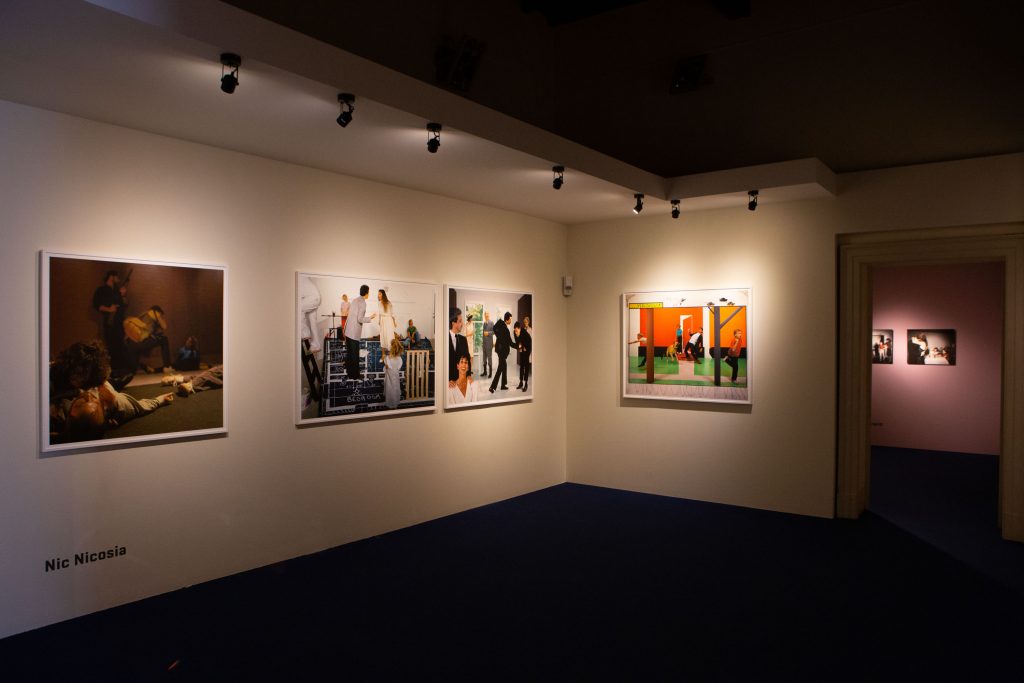
The Cloisters of San Pietro are dedicated to the new talents of Giovane fotografia italiana (Young Italian Photography) and Speciale 18-25. The former, under the guidance of Ilaria Campioli and Daniele de Luigi, deals with the theme of Reconstructions, so full of meanings in the difficult Italian and international current situation; the projects of the seven authors (Domenico Camarda, Alisa Martynova, Irene Fenara, Francesca Pili, Vaste Program, Martina Zanin and Elena Zottola) explore the possibility of photography to reconstruct reality, in search of a deeper and more meditated reading of the world.
The young authors of Speciale 18-25 (Bianca Arnold, Valeria Dellisanti, Gloria Di Cintio, Martina Guardini, Alida Lardini, Giuseppe Martella, Noemi Pittalà), led by Sara Munari, experimented on the text of On the moon, engaging in a poetic operation of photographic fantasy.
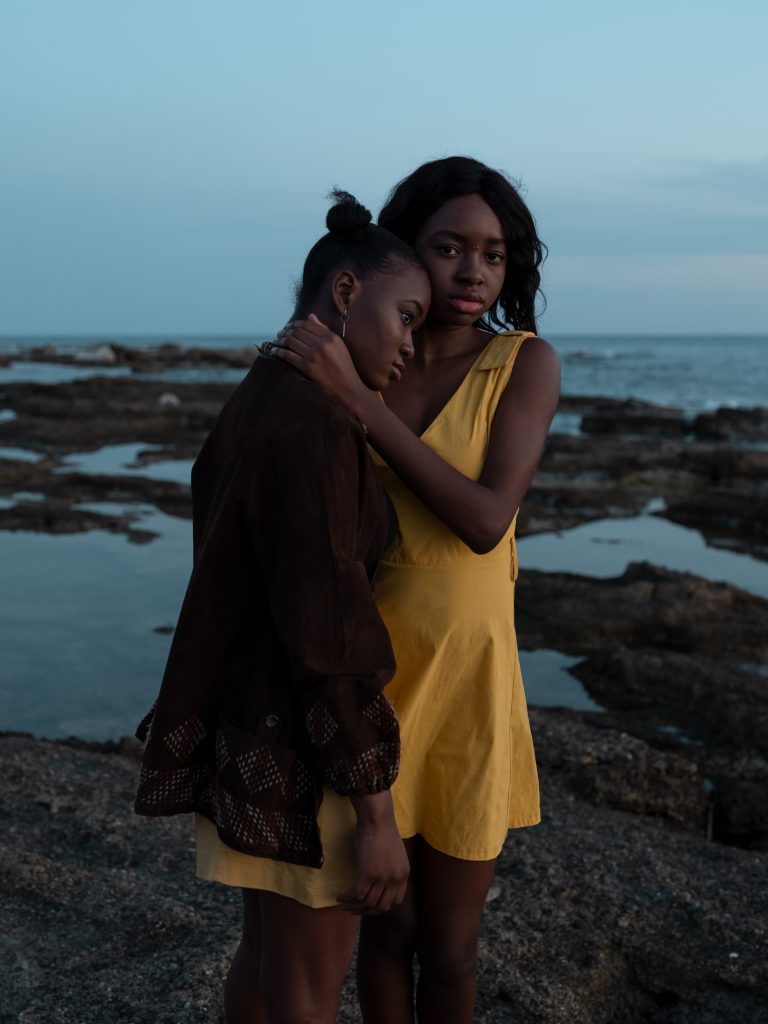
Spazio Gerra hosts the works of the Back to Land path, a hymn to the return to the earth between utopia and possible alternatives, developed by Gianluca Abbate, Martin Baraga, Annamaria Belloni and DEM as part of the artistic residencies promoted by Mediaterra Aemilia. Experiences of future rurality.
A glimpse into the collective memory of the city of Reggio is represented by the selection of the treasures of the Biblioteca Panizzi, while Collezione Maramotti presents Mollino/Insides, a pictorial (Enoc Perez) and photographic (Brigitte Schindler) reinterpretation of the last, suggestive residence of the architect, photographer and mountaineer Carlo Mollino. Last but not least, Linea di confine per la Fotografia Contemporanea presents Lunario, the thirty-year work with which Guido Guidi has linked the scientific research methodology developed by Galileo in Sidereus Nuncius with the technical and linguistic specificities of the photographic medium.
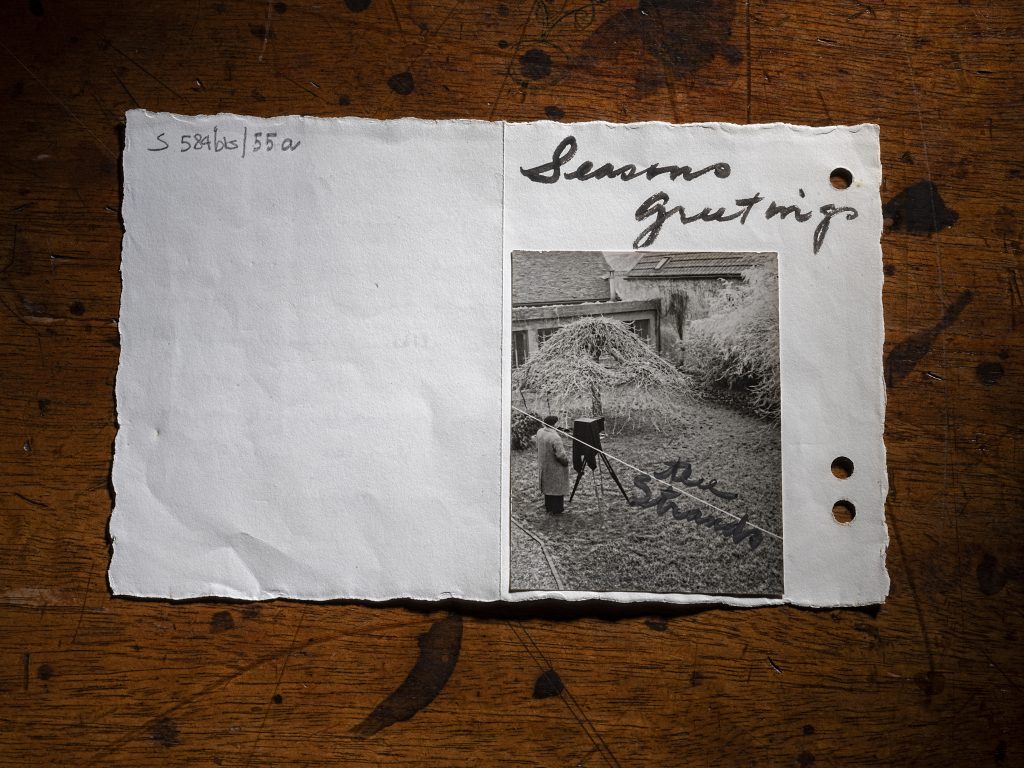
Despite the sudden forced closure a few weeks after opening, Fotografia Europea has shown an extraordinary ability to rethink itself, updating the general theme and the meaning of the work already planned, updating the reading to sudden and dramatic events, adding new looks to broaden the reflection scenarios.
The strength of the authors, the clarity of the curators, the wide and high-profile offer, make Fotografia Europea a fundamental annual event on contemporaneity; told, interpreted and reconstructed through the countless forms of expression made available by photography.
Website Fotografia Europea: www.fotografiaeuropea.it/en/
